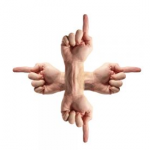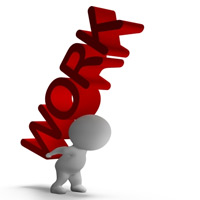Alexander Technique Posture Help Directions
I wish to free my neck … so that
My head can move forward and up…so that
My torso can lengthen and widen and…
My legs can move away from my torso and…
My shoulders can release out the sides.
Alexander Technique postural directions act as verbal, or neuro-linguistic cues. They tell us where we want to go, which is often upward, outward—expansion. Up, down, and out. Head up, feet or sit bones down, shoulders out, legs away, arms away.
These Alexander Technique directions affect more than just the specific parts being named. They affect your neck, back, arms, hands, legs, knees, hips, ankles, shoulders, jaw, elbows, wrists, breathing, mood, and outlook. They will help posture and sense of well-being.
It’s helpful to think of these Alexander Technique posture help directions as preventive.
‘I wish to free my neck’ may be translated into ‘I wish to stop tightening my neck’.
‘…so that my head can move forward and up.’ Here we go. Isn’t moving the head forward exactly what we don’t want? Yes. And no. It depends upon what we mean by forward. If we stick our faces or the jaw forward we will jut our neck forward, compressing. Not good.
We want a forward *rotation* of the head, a forward *tilt* of the head. That’s a very different thought, and movement. It’s especially different when you combine it with ‘up’ as in ‘forward and up’. Think of slightly, slowly lowering your nose while the crown of your head moves up.
‘…my torso can lengthen and widen.’ Again, these directions are preventive, so you want to make sure the opposite isn’t happening. In this case you don’t want to shorten and narrow your torso. We’re often collapsed down in front to varying degrees, kind of being sucked down into the computer screen, for example, or whatever else might be in front of us. This shortening and narrowing can become habitual, carrying over into everything else we do including walking, brushing your teeth, putting on makeup, watching TV, or just having a conversation.
‘…my legs can move away from my torso.’ Again, think of the opposite. The opposite of your legs moving away from your torso would be when we tighten our legs or grip our toes. When muscles are working, they’re shortening. Pulling the legs into the torso pulls them into the hip joints.
…my shoulders can release out the sides. If you’re allowing the other directions to happen, your shoulders will stop narrowing or will no longer be ’rounded’. These directions will stop us from collapsing our shoulders down in front, or trying to keep them back, both forms of narrowing and additional unnecessary tension.
Mark Josefsberg-Alexander Technique NYC
(917) 709-4648












Leave A Comment